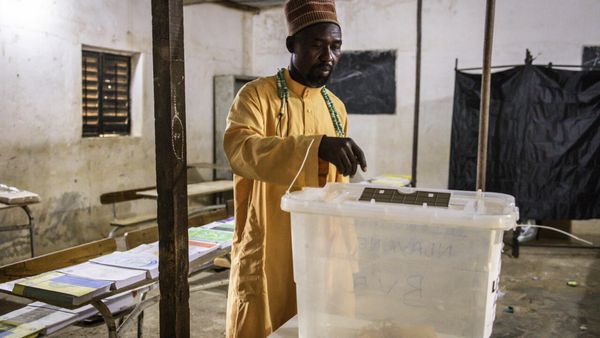The primary Federal Reserve inflation gauge cooled in April, raising hopes for a rate cut as soon as September. The S&P 500 turned lower after rallying at the open on the Fed-friendly data, but stocks made a late-day charge to finish solidly in the green.
Primary Fed Inflation Rate
The personal consumption expenditures, or PCE, price index rose 0.3% in April, in line with estimates. The 12-month headline inflation rate held at 2.7%, as expected.
Typically, Federal Reserve decision-making puts more weight on core inflation, which strips out volatile food and energy prices. The core PCE price index rose 0.2% in April, matching forecasts and the smallest increase so far this year.
The 12-month core inflation rate held at 2.8%, as expected.
On an unrounded basis, the core PCE price index rose 0.249%. At first blush, that's not as benign as the 0.2% reading. However, the big picture looks better. Thanks partly to downward revisions to first-quarter inflation data, the Fed's primary core inflation rate registered 2.75% over the past 12 months, which rounded up to 2.8%.
Core inflation hasn't been this low since March 2021.
Supercore Services Inflation
Still, the April inflation data showed that more progress is needed to bring down what Wall Street now calls supercore inflation. This metric unveiled by Federal Reserve chair Jerome Powell in late 2022 measures changes in core service prices excluding housing. This narrower view of price changes was in keeping with the Fed's worry that the tight labor market and elevated wage growth had been at the root of stubbornly high inflation. Wages make up a high percentage of costs for service businesses. Therefore, supercore services inflation should ease as wage pressures moderate.
In April, prices for these core nonhousing services, including health care, haircuts and hospitality, rose 0.265% on the month, after a 0.4% increase in February.
The 12-month supercore services inflation rate dipped to 3.4% from 3.5% in March, but though it is up from 3.3% at the end of 2023.
Personal Income, Spending
The PCE price index is released with the Commerce Department's monthly personal income and outlays report. Personal income rose 0.3%, matching forecasts. Personal consumption expenditures rose 0.2% in April, below 0.3% estimates. That followed back-to-back gains of 0.7%.
Adjusted for inflation, consumer outlays dipped 0.1% in April. That could lead economists to lower Q2 GDP growth estimates, after tepid 1.3% growth in Q1.
Federal Reserve Rate-Cut Outlook
After April's core PCE inflation data, market pricing showed 53% odds that the first Fed rate cut will come by the Sept. 18 policy meeting, up slightly from 49% ahead of the report.
Markets now see 55% odds of no more than one quarter-point rate cut for the full year, down slightly from 60%. That includes a 15% chance that the Fed will leave rates steady.
S&P 500
The S&P 500 rose 0.8% in Friday stock market action, reversing moderate losses with a late-day charge. The S&P 500 averted a three-session losing streak. On Thursday, the S&P 500 slipped 0.6%, finishing 1.6% below its May 21 record closing high.
The combination of cooler core inflation and soft consumption in April sent the 10-year Treasury yield down five basis points to 4.5%.
Be sure to read IBD's The Big Picture column after each trading day to get the latest on the prevailing stock market trend and what it means for your trading decisions.







